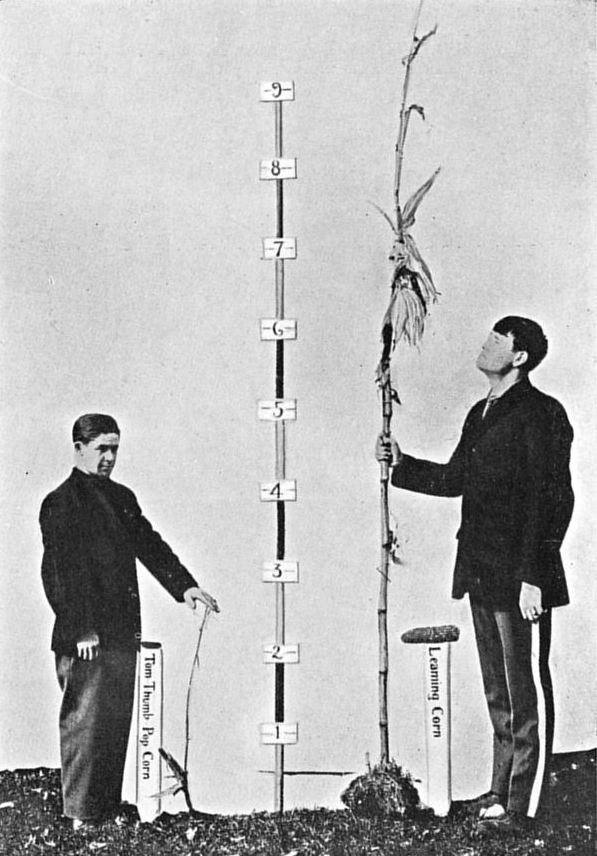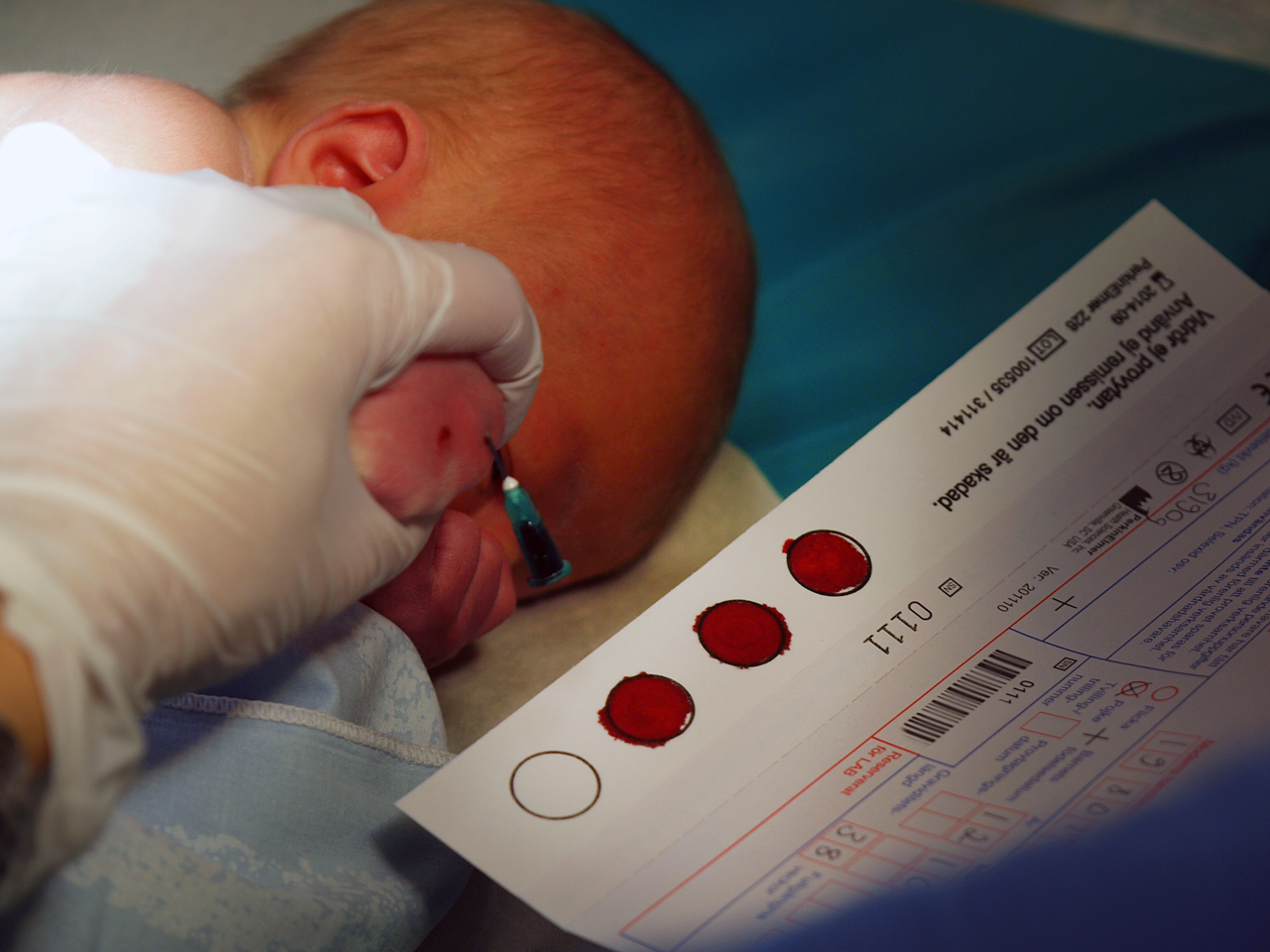|
Polygenic Scores
In genetics, a polygenic score (PGS), also called a polygenic risk score (PRS), polygenic index (PGI), genetic risk score, or genome-wide score, is a number that summarizes the estimated effect of many genetic variants on an individual's phenotype, typically calculated as a weighted sum of trait-associated alleles. It reflects an individual's estimated genetic predisposition for a given trait and can be used as a predictor for that trait. In other words, it gives an estimate of how likely an individual is to have a given trait only based on genetics, without taking environmental factors into account. Polygenic scores are widely used in animal breeding and plant breeding (usually termed ''genomic prediction'' or ''genomic selection'') due to their efficacy in improving livestock breeding and crops. In humans, polygenic scores are typically generated from genome-wide association study (GWAS) data. Recent progress in genetics has enabled the creation of polygenic predictors of comple ... [...More Info...] [...Related Items...] OR: [Wikipedia] [Google] [Baidu] |
Linkage Disequilibrium
In population genetics, linkage disequilibrium (LD) is the non-random association of alleles at different loci in a given population. Loci are said to be in linkage disequilibrium when the frequency of association of their different alleles is higher or lower than what would be expected if the loci were independent and associated randomly. Linkage disequilibrium is influenced by many factors, including selection, the rate of genetic recombination, mutation rate, genetic drift, the system of mating, population structure, and genetic linkage. As a result, the pattern of linkage disequilibrium in a genome is a powerful signal of the population genetic processes that are structuring it. In spite of its name, linkage disequilibrium may exist between alleles at different loci without any genetic linkage between them and independently of whether or not allele frequencies are in equilibrium (not changing with time). Furthermore, linkage disequilibrium is sometimes referred to as gamet ... [...More Info...] [...Related Items...] OR: [Wikipedia] [Google] [Baidu] |
Heritability
Heritability is a statistic used in the fields of breeding and genetics that estimates the degree of ''variation'' in a phenotypic trait in a population that is due to genetic variation between individuals in that population. The concept of heritability can be expressed in the form of the following question: "What is the proportion of the variation in a given trait within a population that is ''not'' explained by the environment or random chance?" Other causes of measured variation in a trait are characterized as environmental factors, including observational error. In human studies of heritability these are often apportioned into factors from "shared environment" and "non-shared environment" based on whether they tend to result in persons brought up in the same household being more or less similar to persons who were not. Heritability is estimated by comparing individual phenotypic variation among related individuals in a population, by examining the association between ind ... [...More Info...] [...Related Items...] OR: [Wikipedia] [Google] [Baidu] |
List Of Biobanks
A biobank is a physical place which stores biological specimens. In some cases, participant data is also collected and stored. Access policies details may vary across biobanks but generally involve obtaining ethics approval from institutional review boards (IRB) and scientific review or peer review Peer review is the evaluation of work by one or more people with similar competencies as the producers of the work (peers). It functions as a form of self-regulation by qualified members of a profession within the relevant field. Peer review ... approval from the institutions under which the biobanks operate as well as Ethics approval from the institutions where the research projects will be undertaken. The samples and data are safeguarded so that researchers can use them in experiments deemed adequate. This article contains a list of biobanks. Classification Biobanks can be classified in several ways. Some examples of how they can be classified is by their controlling entit ... [...More Info...] [...Related Items...] OR: [Wikipedia] [Google] [Baidu] |
Biobank
A biobank is a type of biorepository that stores biological samples (usually human) for use in research. Biobanks have become an important resource in medical research, supporting many types of contemporary research like genomics and personalized medicine. Biobanks can give researchers access to data representing a large number of people. Samples in biobanks and the data derived from those samples can often be used by multiple researchers for cross purpose research studies. For example, many diseases are associated with single-nucleotide polymorphisms. Genome-wide association studies using data from tens or hundreds of thousands of individuals can identify these genetic associations as potential disease biomarkers. Many researchers struggled to acquire sufficient samples prior to the advent of biobanks. Biobanks have provoked questions on privacy, research ethics, and medical ethics. Viewpoints on what constitutes appropriate biobank ethics diverge. However, a consensus has bee ... [...More Info...] [...Related Items...] OR: [Wikipedia] [Google] [Baidu] |
Receiver Operating Characteristic
A receiver operating characteristic curve, or ROC curve, is a graphical plot that illustrates the diagnostic ability of a binary classifier system as its discrimination threshold is varied. The method was originally developed for operators of military radar receivers starting in 1941, which led to its name. The ROC curve is created by plotting the true positive rate (TPR) against the false positive rate (FPR) at various threshold settings. The true-positive rate is also known as sensitivity, recall or ''probability of detection''. The false-positive rate is also known as ''probability of false alarm'' and can be calculated as (1 − specificity). The ROC can also be thought of as a plot of the power as a function of the Type I Error of the decision rule (when the performance is calculated from just a sample of the population, it can be thought of as estimators of these quantities). The ROC curve is thus the sensitivity or recall as a function of fall-out. In general, if the ... [...More Info...] [...Related Items...] OR: [Wikipedia] [Google] [Baidu] |
Binary Classification
Binary classification is the task of classifying the elements of a set into two groups (each called ''class'') on the basis of a classification rule. Typical binary classification problems include: * Medical testing to determine if a patient has certain disease or not; * Quality control in industry, deciding whether a specification has been met; * In information retrieval, deciding whether a page should be in the result set of a search or not. Binary classification is dichotomization applied to a practical situation. In many practical binary classification problems, the two groups are not symmetric, and rather than overall accuracy, the relative proportion of different types of errors is of interest. For example, in medical testing, detecting a disease when it is not present (a ''false positive'') is considered differently from not detecting a disease when it is present (a ''false negative''). Statistical binary classification Statistical classification is a problem studied in ma ... [...More Info...] [...Related Items...] OR: [Wikipedia] [Google] [Baidu] |
Predicted Vs Actual Height Using A Polygenic Risk Score
A prediction (Latin ''præ-'', "before," and ''dicere'', "to say"), or forecast, is a statement about a future event or data. They are often, but not always, based upon experience or knowledge. There is no universal agreement about the exact difference from "estimation"; different authors and disciplines ascribe different connotations. Future events are necessarily uncertain, so guaranteed accurate information about the future is impossible. Prediction can be useful to assist in making plans about possible developments. Opinion In a non-statistical sense, the term "prediction" is often used to refer to an informed guess or opinion. A prediction of this kind might be informed by a predicting person's abductive reasoning, inductive reasoning, deductive reasoning, and experience; and may be useful—if the predicting person is a knowledgeable person in the field. The Delphi method is a technique for eliciting such expert-judgement-based predictions in a controlled way. Th ... [...More Info...] [...Related Items...] OR: [Wikipedia] [Google] [Baidu] |
Embryo Selection
In vitro fertilisation (IVF) is a process of fertilisation where an egg is combined with sperm in vitro ("in glass"). The process involves monitoring and stimulating an individual's ovulatory process, removing an ovum or ova (egg or eggs) from their ovaries and letting sperm fertilise them in a culture medium in a laboratory. After the fertilised egg (zygote) undergoes embryo culture for 2–6 days, it is transferred by catheter into the uterus, with the intention of establishing a successful pregnancy. IVF is a type of assisted reproductive technology used for infertility treatment, gestational surrogacy, and, in combination with pre-implantation genetic testing, avoiding transmission of genetic conditions. A fertilised egg from a donor may implant into a surrogate's uterus, and the resulting child is genetically unrelated to the surrogate. Some countries have banned or otherwise regulate the availability of IVF treatment, giving rise to fertility tourism. Restrictions o ... [...More Info...] [...Related Items...] OR: [Wikipedia] [Google] [Baidu] |
Bloomberg News
Bloomberg News (originally Bloomberg Business News) is an international news agency headquartered in New York City and a division of Bloomberg L.P. Content produced by Bloomberg News is disseminated through Bloomberg Terminals, Bloomberg Television, Bloomberg Radio, ''Bloomberg Businessweek'', ''Bloomberg Markets'', Bloomberg.com, and Bloomberg's mobile platforms. Since 2015, John Micklethwait has served as editor-in-chief. History Bloomberg News was founded by Michael Bloomberg and Matthew Winkler in 1990 to deliver financial news reporting to Bloomberg Terminal subscribers. The agency was established in 1990 with a team of six people. Winkler was first editor-in-chief. In 2010, Bloomberg News included more than 2,300 editors and reporters in 72 countries and 146 news bureaus worldwide. Beginnings (1990–1995) Bloomberg Business News was created to expand the services offered through the terminals. According to Matthew Winkler, then a writer for ''The Wall Street Journal ... [...More Info...] [...Related Items...] OR: [Wikipedia] [Google] [Baidu] |
Mendelian Inheritance
Mendelian inheritance (also known as Mendelism) is a type of biological inheritance following the principles originally proposed by Gregor Mendel in 1865 and 1866, re-discovered in 1900 by Hugo de Vries and Carl Correns, and later popularized by William Bateson. These principles were initially controversial. When Mendel's theories were integrated with the Boveri–Sutton chromosome theory of inheritance by Thomas Hunt Morgan in 1915, they became the core of classical genetics. Ronald Fisher combined these ideas with the theory of natural selection in his 1930 book ''The Genetical Theory of Natural Selection'', putting evolution onto a mathematical footing and forming the basis for population genetics within the modern evolutionary synthesis. History The principles of Mendelian inheritance were named for and first derived by Gregor Johann Mendel, a nineteenth-century Moravian monk who formulated his ideas after conducting simple hybridisation experiments with pea plants (' ... [...More Info...] [...Related Items...] OR: [Wikipedia] [Google] [Baidu] |






